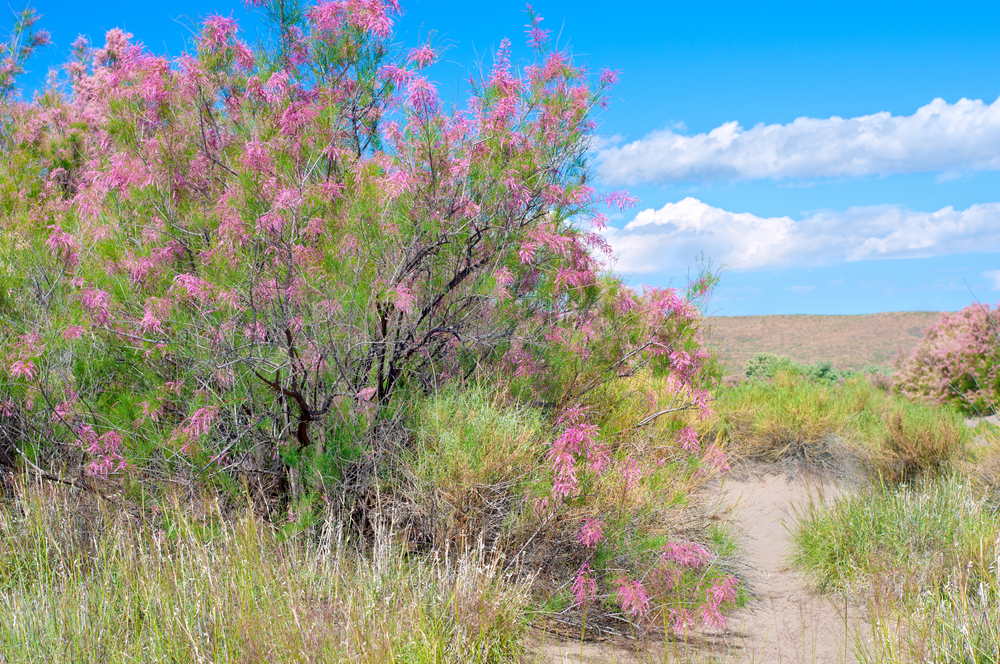|
Having trouble viewing this email? View it as a Web page.
November 30, 2023
December Weed of the Month: Saltcedar
Where it is prevalent, saltcedar has many negative impacts on native plants and wildlife species
Minnesota Department of Agriculture
In January, the Minnesota Department of Agriculture (MDA) added saltcedar (Tamarix ramosissima) to the Minnesota Noxious Weed List. Saltcedar was originally introduced in the 1800s to the western United States. It has been planted as a landscape plant, a windbreak, and for erosion prevention, but has not been widely utilized in Minnesota. Saltcedar’s native range is western Europe, the Mediterranean, and temperate Asia.
Saltcedar is a long-lived deciduous shrub or small tree. It has scale-like leaves that resemble the needles of juniper or cedar. Flowers are pink and occur in clusters along the branches. It has deep roots that extend to the water table. Saltcedar is also tolerant of drought, salt, and prefers full sun.
 Saltcedar growing in an arid, grassy environment along a sandy path.
Click here to download the photo.
Saltcedar has naturalized along floodplains, riverbanks, roadsides, and other disturbed areas. Where it is prevalent, saltcedar has many negative impacts on native plants and wildlife species. Its high seed production and rapid growth rate can quickly displace native plant species, especially in areas of high salinity or in areas with low water tables. As its common name suggests, the leaves of saltcedar are covered in salt. When the leaves drop, the salt covered leaves collect on the soil surface and salinity of the soil increases. This further leads to a lack of germination of native species.
Saltcedar also has environmental effects on ecosystems, most notably riparian or wetland areas. The roots of saltcedar bind gravel together, leading to erosion issues and an increased likelihood of flooding. The leaf litter and foliage of saltcedar is flammable, which encourages further spread of wildfires. Fire decreases native plant vegetation. Saltcedar seedlings resprout readily following fire, further encouraging their spread. The main taproot of saltcedar extends deep to the water table, and while actively growing, a single plant can use up to 200 gallons of water. Sites invaded by saltcedar typically become much drier and stream flows are reduced. Saltcedar may have recreation impacts as well, especially in riparian areas.
Saltcedar is a Restricted species on the Noxious Weed List. Propagation and sale of this plant are prohibited in Minnesota. Although Restricted Noxious Weeds are not required to be controlled or eradicated by law, landowners are strongly encouraged to manage these invasive plants on their properties to reduce spread into new areas.
Report saltcedar in natural settings via EDDMapS. More information is available on the MDA website.
MEDIA: For more information on Weed of the Month, contact Brittany Raveill, MDA Communications, at brittany.raveill@state.mn.us or 651-201-6131
|